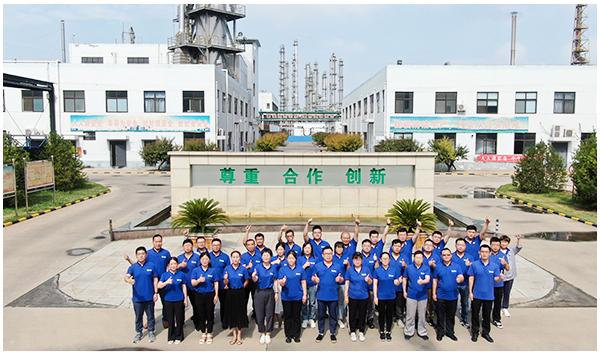
News
Oct . 10, 2024 13:28 Back to list
cip cleaner with chelating agent
The Importance of CIP Cleaners with Chelating Agents in Modern Industries
In today's fast-paced industrial landscape, maintaining high standards of hygiene and cleanliness is paramount. Clean-in-Place (CIP) systems have revolutionized how industries like food and beverage, pharmaceuticals, and cosmetics ensure their equipment is free from contaminants. Among the various cleaning agents used in CIP processes, those that incorporate chelating agents stand out for their effectiveness and versatility.
Understanding CIP and Chelating Agents
CIP is a method of cleaning the interior surfaces of pipes, vessels, processes, and equipment without the need for disassembly. This method is crucial in industries where hygiene is critical, as it minimizes downtime and contamination risks. CIP systems use a series of cleaning and rinsing cycles, employing various cleaning agents that can dissolve or dislodge organic and inorganic residues, biofilms, and scale deposits.
Chelating agents are compounds that can bind to metal ions and facilitate their removal from surfaces. These agents are particularly valuable because they can help to soften water, enhance the solubility of contaminants, and improve the overall effectiveness of cleaning solutions. In many manufacturing processes, metals can accumulate in machinery due to corrosion or scale formation, negatively impacting product quality and equipment efficiency. Therefore, integrating chelating agents into CIP cleaners can significantly improve cleaning performance.
How Chelating Agents Work
Chelating agents, such as ethylenediaminetetraacetic acid (EDTA), citric acid, and polyacrylic acids, work by forming stable complexes with metal ions. This action prevents the ions from precipitating or forming deposits that could lead to corrosion, inefficiencies, or contamination. By binding with these ions, chelating agents render them soluble, allowing for efficient removal during the CIP process.
For example, in the food and beverage industry, calcium and magnesium ions can lead to hard water scaling on equipment surfaces. Chelating agents in CIP solutions can sequester these ions, preventing scale formation and ensuring that equipment remains clean and operational. This is especially important in maintaining the integrity of products and complying with health and safety regulations.
Advantages of Using CIP Cleaners with Chelating Agents
cip cleaner with chelating agent

1. Enhanced Cleaning Efficiency The primary advantage of using CIP cleaners with chelating agents is their ability to enhance the cleaning action. By effectively mobilizing metal ions and preventing scaling, these agents facilitate thorough cleaning, leading to decreased cleaning times and increased productivity.
2. Reduced Chemical Usage Chelating agents can improve the effectiveness of cleaning solutions, which may result in reduced concentrations of other chemicals needed for cleaning. This not only lowers costs but also minimizes the environmental impact of chemical use.
3. Preventive Maintenance Regular use of CIP cleaners with chelating agents can extend the lifespan of equipment by preventing the build-up of deposits that can lead to corrosion and mechanical failure. This proactive approach to maintenance can save companies money and reduce downtime due to equipment failure.
4. Improved Product Quality In industries where product integrity is vital, such as pharmaceuticals and food production, using effective CIP cleaning solutions ensures that no residues remain that could compromise the end product. Chelating agents help achieve the high cleanliness standards required, safeguarding product quality.
5. Versatility Chelating agents can be formulated to work effectively across a range of conditions, including varying temperatures and pH levels. This versatility allows industries to customize their cleaning processes to better suit specific operational requirements.
Challenges and Considerations
While the benefits are substantial, it’s essential to carefully consider the choice of chelating agents and their concentrations. Some chelating agents may have environmental implications or reactions with certain materials, so their use should be evaluated based on the specific context of application. Additionally, regulations governing chemical usage in various industries must be adhered to, ensuring that any cleaning agents used comply with safety and environmental standards.
Conclusion
In conclusion, the integration of chelating agents into CIP cleaners represents a significant advancement in industrial cleaning technology. By enhancing cleaning efficiency, reducing chemical usage, and improving maintenance protocols, these agents play a critical role in ensuring high hygienic standards across various sectors. As industries continue to evolve, the commitment to cleanliness and safety will remain a top priority, making innovative cleaning solutions, including CIP cleaners with chelating agents, indispensable in modern manufacturing processes.
-
Polyaspartic Acid Salts in Agricultural Fertilizers: A Sustainable Solution
NewsJul.21,2025
-
OEM Chelating Agent Preservative Supplier & Manufacturer High-Quality Customized Solutions
NewsJul.08,2025
-
OEM Potassium Chelating Agent Manufacturer - Custom Potassium Oxalate & Citrate Solutions
NewsJul.08,2025
-
OEM Pentasodium DTPA Chelating Agent Supplier & Manufacturer High Purity & Cost-Effective Solutions
NewsJul.08,2025
-
High-Efficiency Chelated Trace Elements Fertilizer Bulk Supplier & Manufacturer Quotes
NewsJul.07,2025
-
High Quality K Formation for a Chelating Agent – Reliable Manufacturer & Supplier
NewsJul.07,2025
